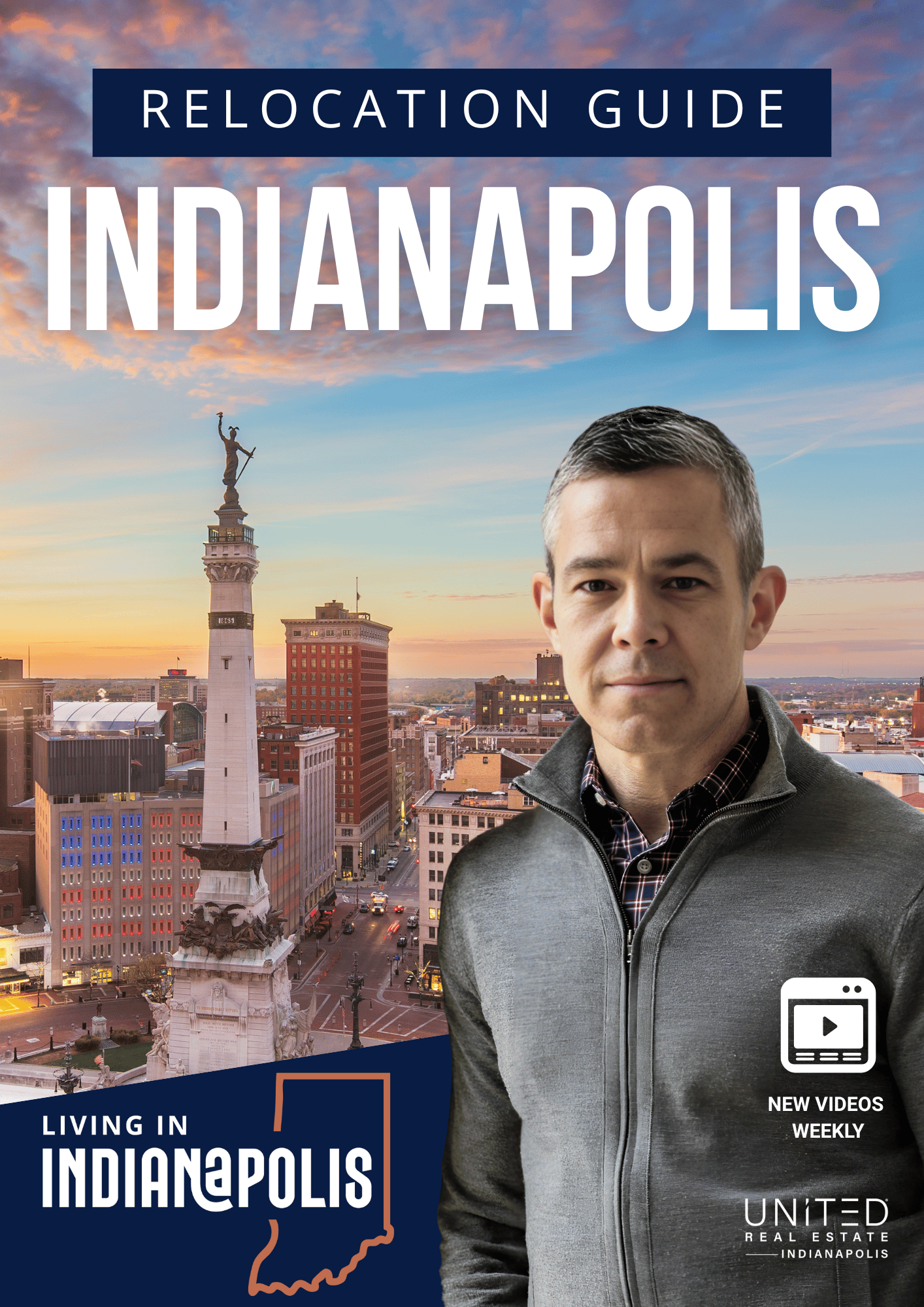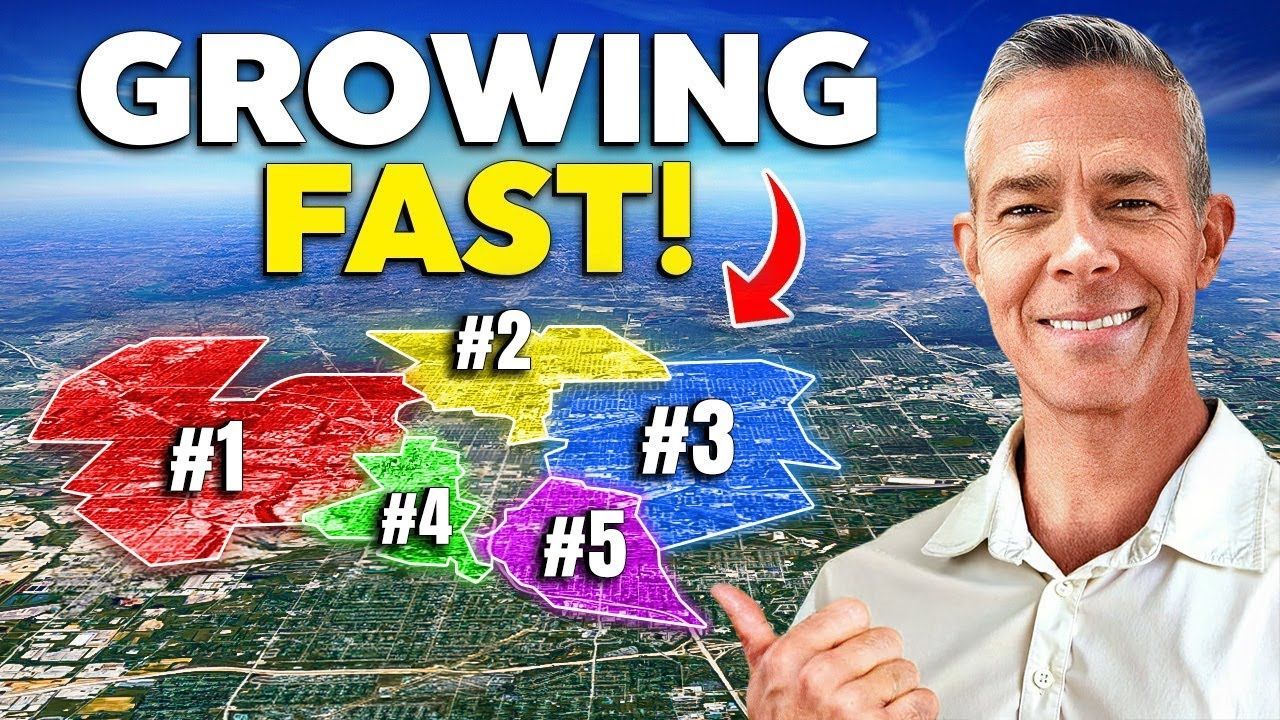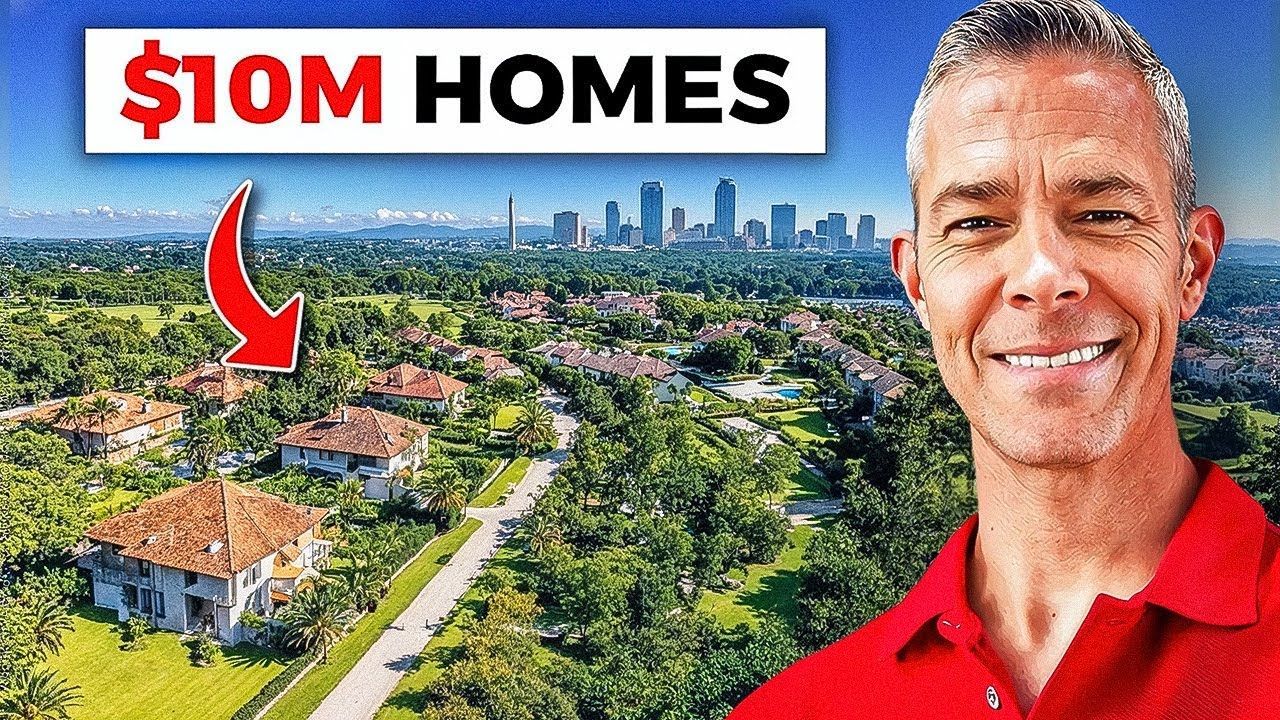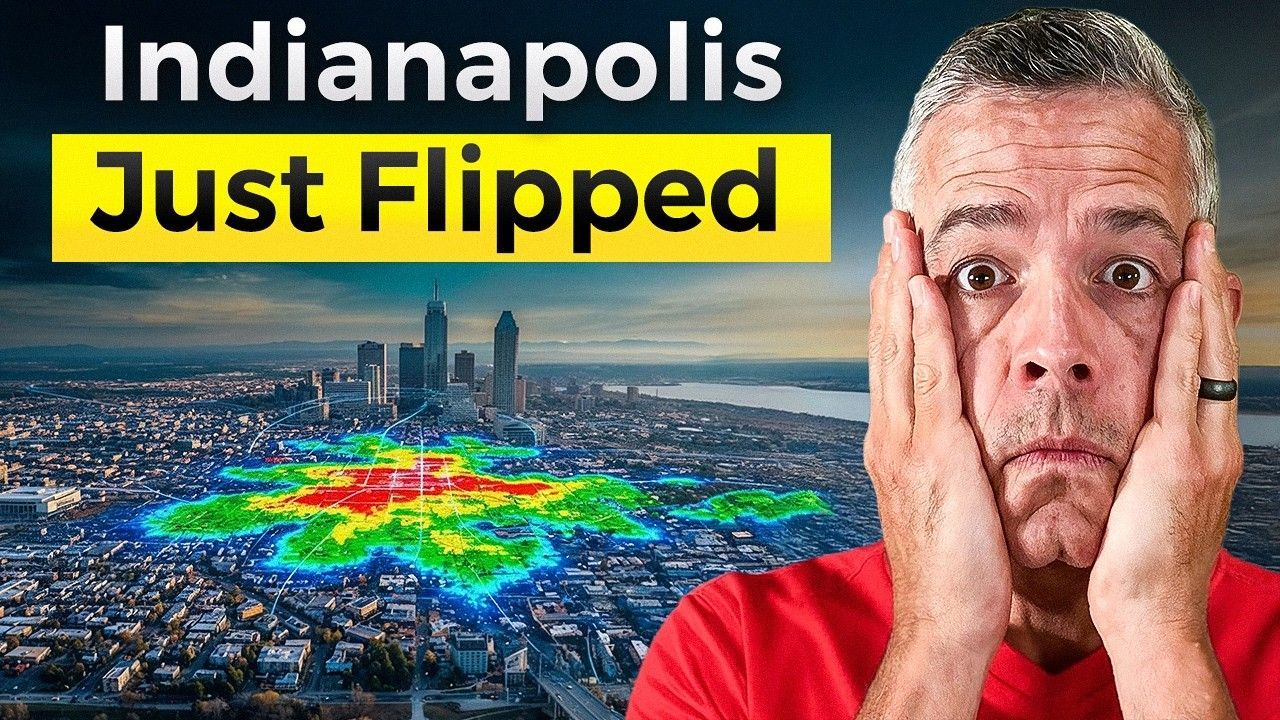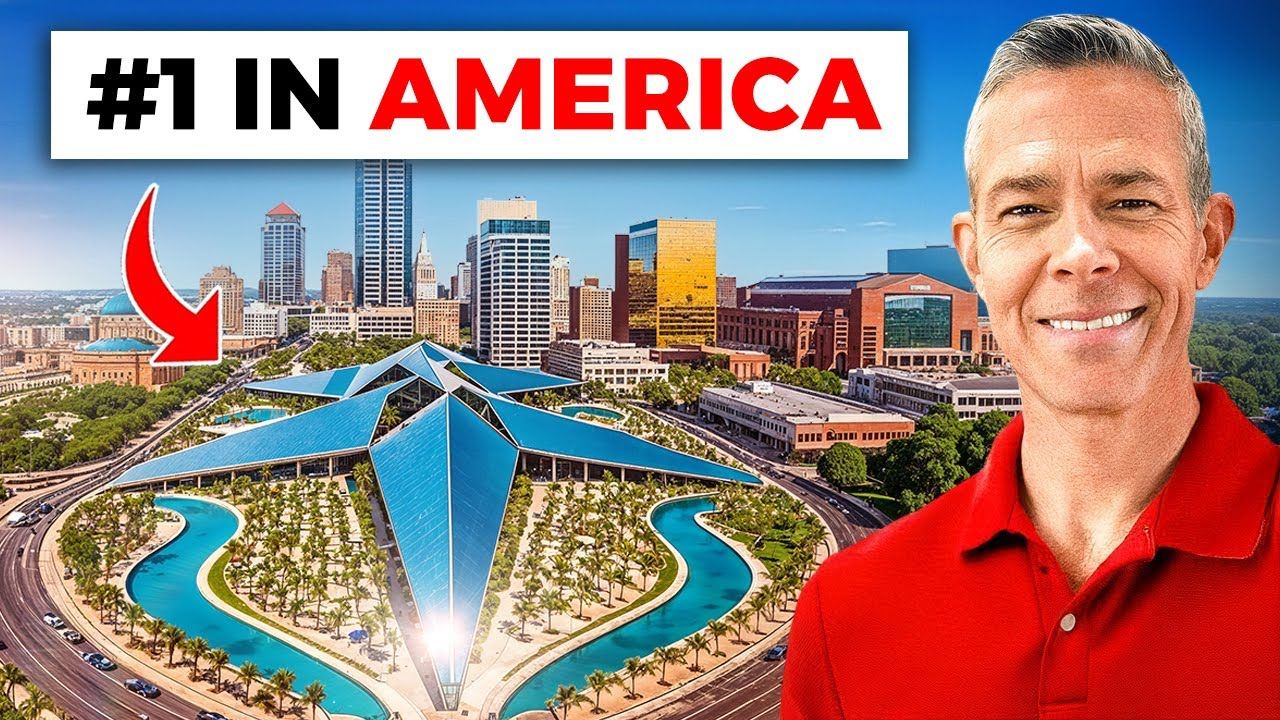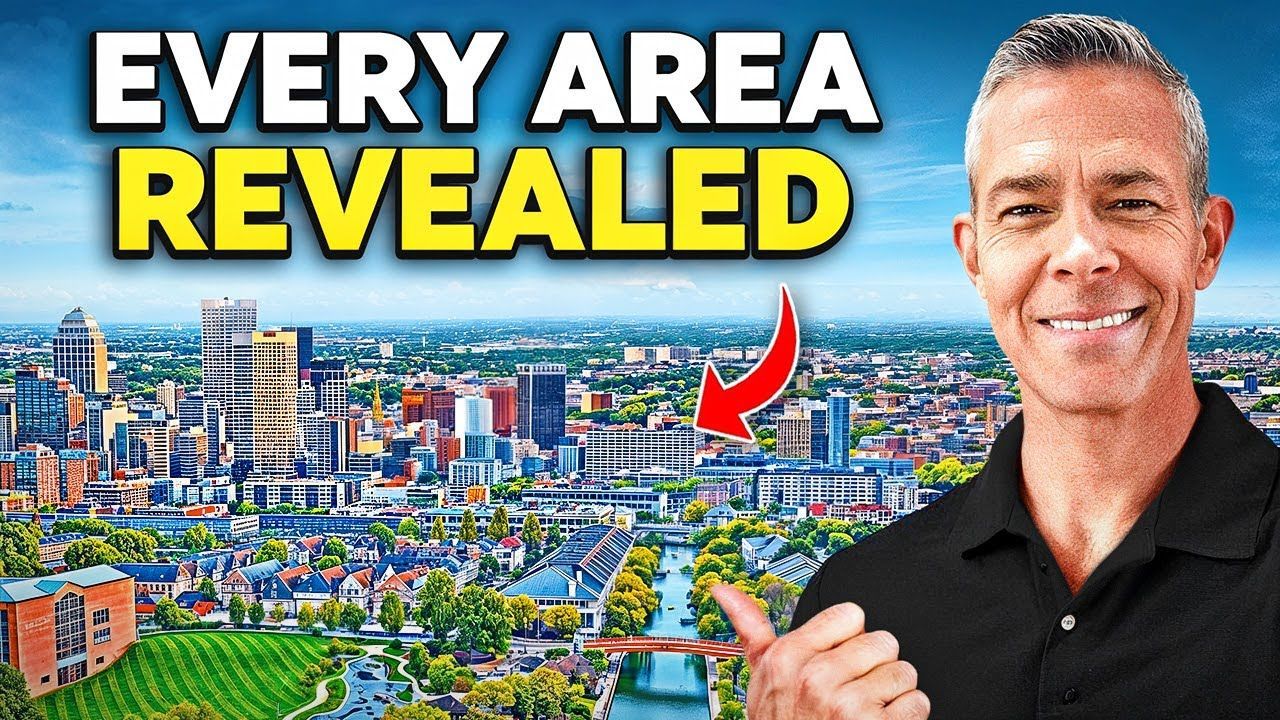If YOU are Relocating to Indianapolis in 2025... WATCH THIS!
Thinking about moving to Indianapolis in 2025? I’m Jason Compton from Living In Indianapolis, and I walk families through this exact decision every week. In this guide I’ll lay out what life really looks like here — the growth story, job market, neighborhoods, housing costs, weather, culture, and the real pros and cons so you can decide whether moving to Indianapolis in 2025 is the right move for you and your family.
Table of Contents
- Why so many people are moving to Indianapolis in 2025
- The Complete Guide to Local Life: Entertainment, Food, Outdoors, Housing, and Work in Indianapolis
- Pros of Moving to Indianapolis in 2025
- Cons and Realistic Downsides
- How to Decide if Moving to Indianapolis in 2025 is the Right Move
- Checklist for a Smooth Relocation to Indianapolis in 2025
- Financial Considerations: Taxes, Insurance and Utilities
- Moving to Indianapolis in 2025 With Kids — Schools and Family Life
- What I Hear Most From Families Who Have Already Moved Here
- How I Help People Moving to Indianapolis in 2025
- FAQs About Moving to Indianapolis in 2025
- Final Thoughts: Is Moving to Indianapolis in 2025 the Right Move for You?
Why so many people are moving to Indianapolis in 2025
If you’re considering moving to Indianapolis in 2025, you’re not alone. The metro is growing fast — and there are several clear reasons why. Indianapolis itself is over 900,000 people, and when you include suburbs like Carmel, Fishers, Westfield, Greenwood, Brownsburg, Plainfield and Avon, the metro population sits at roughly 2.14 million people. Since 2020 the metro has grown about 4.1% — roughly 85,000 people added to the area every year.
That growth is being driven by real economic strength: healthcare, tech, logistics, manufacturing, life sciences and motorsports are all big employers here. The metro’s GDP of about $199.2 billion places Indianapolis among the top 30 largest economic markets in the country — a fact that surprises a lot of people who assume Indy is only a “Midwest college town.”
The Complete Guide to Local Life: Airport, Entertainment, Food, Outdoors, Housing, and Work in Indianapolis
Getting here and getting around: The airport and transportation
One of the underrated advantages if you’re moving to Indianapolis in 2025 is the airport. Indianapolis International handles approximately 10.5 million passengers annually and offers direct flights to more places than many expect. It’s consistently rated among the most efficient, easy-to-navigate medium-size airports in the country — easy parking, short walks to gates, quick security. For frequent travelers or families who fly regularly, that convenience is huge.
Public transit in the city exists but is limited. The Red Line bus rapid transit helps downtown commutes, but overall public transportation accounts for less than half a percent of trips across the metro. If you rely on transit in your daily life, that’s worth knowing when planning a move to Indianapolis in 2025.
Sports, entertainment, and culture: Active city life without the chaos
For sports fans, Indianapolis delivers. You’ll find professional venues clustered downtown: Lucas Oil Stadium (Colts), Gainbridge Fieldhouse (Pacers, Fever), Victory Field (AAA baseball — Indianapolis Indians), and a growing soccer scene with the Indy Eleven stadium and hopes for MLS expansion. The NCAA headquarters in White River State Park means college athletics and related events are a fixture here.
Museums and events are big draws, too. The world-famous Children’s Museum, the Indianapolis Museum of Art (Newfields), the State Museum, the Indiana Historical Society, and the Indianapolis Zoo are all regional highlights. Annual events like the Indianapolis 500 (the largest single-day sporting event in the world with ~350,000 attendees), Gen Con (the world’s largest tabletop gaming convention approaching 100,000 attendees) and the Indiana State Fair (over 800,000 in attendance across the fair) add layers to city life.
Food, breweries, and coffee — a surprisingly rich local scene
The culinary scene has exploded over the last decade. If you like craft beer, moving to Indianapolis in 2025 means access to more than 50 breweries inside the city and nearly 100 across the metro. Distinct neighborhoods like the Bottleworks District on Massachusetts Avenue showcase restaurants such as Modita and many local brewpubs. The coffee scene is booming, too — independent roasters and coffee shops (like Blue Collar Coffee) are sprinkled throughout downtown and the suburbs.
Local venues, gastropubs, and brewpubs often prioritize local beers and roasters, so if you enjoy sampling local producers, moving to Indianapolis in 2025 will give you plenty to explore.
Outdoor life: Trails, parks, and recreation
One surprise for incoming residents is the wealth of outdoor recreation. The Monon Trail is more than 30 miles long, running north from downtown through Carmel and Westfield, all the way to Sheridan. It’s a great daily resource for walking, jogging and cycling.
Within the city there are also major parks with different vibes. White River State Park — adjacent to downtown — mixes museums, the zoo, Amphitheater concerts (Everwise Amphitheater), and open green space. On the northwest side, Eagle Creek Park is one of the largest municipal parks in the U.S., boasting 3,900 acres, a large reservoir for boating, trails, cycling roads and more. For active families, that park alone feels like a gym.
Housing and cost of living — real numbers and what to expect
Let’s get into the numbers — because they matter if you’re seriously considering moving to Indianapolis in 2025. The median home sale price in Indianapolis is about $325,000. That’s roughly 38–40% lower than the national median (around $536,000). Put simply: you get a lot more house for your money here.
Across the metro you’ll find a huge variety of housing options:
- Historic neighborhoods (Chatham Arch, Old Northside, Meridian-Kessler) with mature trees, sidewalks, and walkable urban character.
- Urban condos and lofts in and near downtown and Massachusetts Avenue.
- Townhomes (two-level and three-level) with rear garages that are popular with professionals and small families.
- Suburban communities (Carmel, Fishers, Westfield, Zionsville, Noblesville, Brownsburg, Greenwood) ranging from urban-suburban to master-planned neighborhoods with pools, trails, and community amenities.
Other cost-of-living facts worth noting if you’re moving to Indianapolis in 2025:
- Overall living costs (cars, gas, groceries, general services) are about 14% lower than the national average across the metro.
- Because housing dominates most budgets, the lower median home price contributes heavily to the affordability advantage.
Where people move — popular neighborhoods and suburbs
Here’s a quick guide to match lifestyle preferences with neighborhoods if you’re moving to Indianapolis in 2025:
For walkable urban living
- Massachusetts Avenue / Chatham Arch — restaurants, arts, bars, and a short walk to downtown.
- Old Northside and Meridian-Kessler — historic homes with mature trees and sidewalks.
Urban-suburban blend
- Broad Ripple — artsy neighborhood with nightlife, restaurants, and parks.
- Butler-Tarkington (near Butler University) — residential feel with easy access to downtown.
Suburban family-focused communities
- Carmel — strong schools, many amenities, arts and roundabout culture.
- Fishers — growing tech and retail presence, family-friendly amenities.
- Westfield, Zionsville, Noblesville — suburban growth corridors with new construction and larger yards.
- Brownsburg (west) and Greenwood (south) — more affordable suburban options with quick commutes to the city center.
To explore neighborhoods in depth, I put together a free relocation guide that breaks down these communities, schools, commute times and local vibes. It’s a great first step if you’re moving to Indianapolis in 2025 and trying to narrow down your search.
Download our FREE Relocation Guide
Jobs and the economy: Who’s hiring and where
Employment opportunities are a major reason so many people are moving to Indianapolis in 2025. Here’s a snapshot of the local job market:
- Tech and software: Salesforce has a major presence here (the Salesforce Tower is a prominent downtown building). Infosys and other tech firms are growing local operations, especially around AI and enterprise services.
- Life sciences and pharmaceuticals: Eli Lilly (a major national player) and a broad life science cluster with roughly 350 companies and about 29,000 jobs.
- Health systems: IU Health, Community Health, Ascension, St. Vincent, and many specialty providers anchor a large healthcare employment base.
- Manufacturing and aerospace: Allison Transmission, Rolls-Royce (aircraft parts), Cummins and other manufacturers employ tens of thousands.
- Logistics and distribution: Amazon’s large hub (9,000+ employees), FedEx (around 5,800 employees at the Indy hub), and Walmart’s major distribution center on the east side make Indy a logistics hot spot.
Income tax in Indiana is worth noting. The state income tax rate sits at 3.05% (down from 3.15% in previous years), with plans to reduce it further to 3.0% and eventually to 2.9% by 2027. That can be attractive from a take-home pay perspective compared with higher-tax states.
Weather and seasons: What to expect year-round
Moving to Indianapolis in 2025 means embracing four distinct seasons. Here’s a practical look at what that means:
- Summer (June–September): Warm and sometimes humid. Expect regular highs in the 80s; 90s are possible. Nighttime lows around the mid-60s to low 70s.
- Winter (December–February): Real winter conditions arrive. January and February can be cold, with highs around the low 30s and occasional stretches in the 20s. Severe cold snaps can bring single-digit lows briefly.
- Snow: Indianapolis averages less snow than many expect — often around 20 inches across a winter, with occasional larger storms mixed with lighter, scattered snow events.
- Spring and fall: These are the most pleasant months. Expect sunny, mild days (60s–70s), though spring can be volatile with swings between warm and cool days.
Annual precipitation averages about 42.5 inches, with roughly 125 precipitation days. Most heavy rain comes in spring and summer thunderstorms. Statistically, Indianapolis averages about 2,400 hours of sunshine per year — more than many people expect.
Severe weather and tornado risk — what to prepare for
Given the central location, people often ask about severe weather. Indiana sees tornadoes and severe storms, although not at the same frequency as Tornado Alley states like Oklahoma or Kansas. Some key figures:
- Average tornadoes per year in Indiana: about 22.
- Severe storm watches annually: roughly 13 per year across the state, which rates the area in the top 20 or so among large metros for severe weather watches. Indianapolis ranks around 17th when comparing metros with at least half a million people.
Practical advice: if you’re moving to Indianapolis in 2025, consider home choices with a safe interior room or basement for strong storms, and sign up for local weather alerts. Many homeowners invest in sump pumps, good insulation and storm-safe windows to address both storm and seasonal needs.
Pros of moving to Indianapolis in 2025
If you’re weighing this move, these are the clear advantages people cite after living here for a year or two:
- Affordability: Lower median home prices and a cost of living about 14% below the national average.
- Central location with an efficient airport: Fast access to most U.S. hubs and overall ease of travel.
- Strong job market across sectors: Healthcare, life sciences, manufacturing, logistics and growing tech.
- Family-friendly neighborhoods: Parks, schools and community activities are plentiful.
- Rich arts, sports and festival culture without the overwhelming pace and cost of major coastal cities.
- A true mix of urban, urban-suburban and suburban lifestyles to match many preferences.
Cons and realistic downsides
Nothing’s perfect. Here are common cons people encounter after moving to Indianapolis in 2025:
- Limited public transportation: The Red Line is a start, but public transit accounts for less than 0.5% of trips, making car ownership near-essential for many commutes.
- Winters can be long and gray: For those used to year-round sun, the winter months can feel long and cold.
- Road maintenance: Freeze-thaw cycles, traffic levels and budget constraints mean potholes and road repairs are a recurring issue.
- Slower nightlife pace: If you crave major-city hustle and round-the-clock nightlife, Indianapolis may feel quieter compared to New York, Miami, or Los Angeles.
How to decide if moving to Indianapolis in 2025 is the right move
Every family has a checklist. Here are practical questions to run through before you commit:
- Work: Is your employer here or able to support a relocation? Is there a strong hiring pipeline in your industry (healthcare, tech, logistics, life sciences, manufacturing)?
- Budget: Do median home prices and local taxes align with your financial goals? Remember the metro’s lower cost of living will stretch your housing dollars further.
- Lifestyle: Do you value access to parks, museums, festivals and sports without the constant intensity of a mega-city? Or do you want a 24/7 city lifestyle?
- Education: Are local school systems and neighborhood options aligned with your children’s needs?
- Weather tolerance: Can you handle a true winter with occasional single-digit lows and the potential for severe storms in spring?
- Commute & car reliance: Are you prepared for a car-oriented metro, or will limited public transit impact your day-to-day?
Checklist for a smooth relocation to Indianapolis in 2025
If you decide to move, here’s a step-by-step checklist to make the transition smoother:
- Download a comprehensive relocation guide that outlines neighborhoods, schools, commute times and recommended suburbs.
- Visit the city at least once in different seasons — spring or fall are ideal — to get a feel for weather, traffic and neighborhood rhythms.
- Map your commute: test-drive commutes during rush hour between prospective neighborhoods and your office.
- Budget for moving costs, potential renovations, and storm prep (sump pump, insulation, basement readiness).
- Connect with local professionals: real estate agent, lender, insurance agent and school counselors.
- Join local community groups or neighborhood social channels to get insider tips on real-time issues like road conditions, seasonal events, and new restaurant openings.
Financial considerations: taxes, insurance and utilities
A few financial items to consider when planning your budget for moving to Indianapolis in 2025:
- State income tax: currently around 3.05% with plans to drop toward 2.9% in the next few years — a modest advantage compared with higher-tax states.
- Property tax: varies by county and school district. When evaluating neighborhoods, always include property tax estimates in your monthly cost projections.
- Homeowners insurance and flood/sump needs: depending on the neighborhood and basement risk, add sump pump and water mitigation costs if your new home has a basement.
- Utilities: Winters increase heating bills; summers increase AC usage. Budget seasonally for these swings.
Moving to Indianapolis in 2025 with kids — schools and family life
Indianapolis and the metro suburbs are widely considered family-friendly. Many suburbs like Carmel, Fishers, Zionsville and Noblesville pride themselves on high-performing schools, robust youth sports, and family amenities. Urban neighborhoods near Butler University or Mass Ave offer walkable family life with parks and arts close by.
If you’re moving to Indianapolis in 2025 with school-age children, make district boundaries and school ratings a top priority in your search. Some buyers prioritize smaller towns for school ranking, while others prioritize commute or home style. A local real estate advisor can quickly align your budget and commute with school options.
What I hear most from families who have already moved here
After helping dozens of families relocate, here are common themes I hear after six months to two years in Indy:
- "We can afford a house with more space here than where we came from." — affordability consistently ranks first.
- "We didn’t realize how much culture and food there are." — many new residents are pleasantly surprised by the food, breweries and arts scene.
- "The airport makes our travel life easier." — travelers cite the convenience of IND as a major quality-of-life benefit.
- "Winters are tougher than we expected." — prepare for real winter weather and occasional severe storms.
- "The pace is calm but engaging." — people appreciate the balance: plenty to do, without the constant rush of a mega-city.
How I help people moving to Indianapolis in 2025
As a local agent who specializes in relocations, my approach is education-first and tailored. I focus on:
- Matching lifestyle priorities (school, commute, walkability, yard space) with the right neighborhoods.
- Providing virtual tours and neighborhood videos for out-of-state buyers.
- Offering a step-by-step Living In Framework to guide the move, from initial search to closing, and post-move local orientation.
If you’re early in your research, download a detailed relocation guide and begin narrowing neighborhoods. If you’re ready to move, reach out — I can text, call, and email anytime to start a plan that fits your timeline for moving to Indianapolis in 2025.
FAQ — Common questions about moving to Indianapolis in 2025
Is Indianapolis a good place to raise a family?
Yes — many suburbs offer top-rated schools, parks, safe neighborhoods and family programming. Communities like Carmel, Fishers, Zionsville, and Noblesville are popular with families.
How expensive is it to buy a home here compared to the national average?
The median home sale price in Indianapolis is around $325,000, which is roughly 38–40% below the national median (~$536,000). You typically get more space and a larger yard for your money compared to many coastal metros.
Will I need a car if I move to Indianapolis in 2025?
For most people, yes. Public transit is limited (under 0.5% of trips). The Red Line helps some commutes but doesn’t cover the broader metro like transit in larger cities.
Are there good job opportunities?
Absolutely. Healthcare, life sciences, manufacturing, logistics, and tech are robust and growing. Major employers include Eli Lilly, IU Health, Salesforce, Amazon, FedEx, Allison Transmission and Rolls-Royce (aerospace parts).
What’s the seasonal weather like?
Indianapolis has four distinct seasons. Summers can reach the 80s–90s; winters are cold with highs often in the 20s–30s in January/February. Spring and fall are the most pleasant seasons.
Should I be concerned about tornadoes?
The state averages roughly 22 tornadoes per year, and Indianapolis experiences severe storms and watches. While tornado risk exists, it’s lower than many central Plains states. Still, preparedness and a safe space at home are wise.
Is the downtown nightlife and culture strong?
Yes, but it’s different from very large coastal cities. Indianapolis offers excellent sports, concert venues, museums, festivals, and a growing restaurant and craft beer scene. It’s active but not overwhelming — a “big small city” vibe.
Final thoughts: Is moving to Indianapolis in 2025 the right move for you?
If affordability, a central location, strong job opportunities across multiple sectors, and a family-friendly lifestyle are priorities, then moving to Indianapolis in 2025 is worth serious consideration. You’ll find a city with plenty of cultural and outdoor amenities, an increasingly vibrant food and brewery scene, and neighborhoods to match almost any lifestyle preference.
That said, if you need extensive public transit, year-round warm weather or high-octane nightlife comparable to NYC or LA, Indianapolis may not be the ideal fit.
Planning a move is a big decision. If you're taking the next steps — whether researching neighborhoods, understanding schools, or lining up virtual home tours — I’ve created a 55‑page relocation guide that covers neighborhoods, typical commute times, school overviews, and local insights to help you plan a successful move to Indianapolis in 2025. Reach out any time for a copy or to start a conversation about what life here could look like for you.
Ready to explore neighborhoods, schedule virtual tours, or get the relocation guide? Text or call 317-932-8620 . Welcome — and I look forward to helping you make the move to Indianapolis in 2025 with confidence.
jason compton
A former teacher turned full-time real estate agent serving Greater Indianapolis. I help buyers, sellers, and relocation clients make informed moves—especially those coming from out of state. From neighborhood insights to home tours, my goal is to simplify the process and help you feel confident in every step.
Stay Informed
Insights, Tips & Life in Indianapolis
Your go-to resource for all things real estate and Indy living. Whether you're buying, selling, relocating, or just curious about the local market, our blog is packed with helpful articles, expert advice, and community highlights to keep you informed and inspired.
